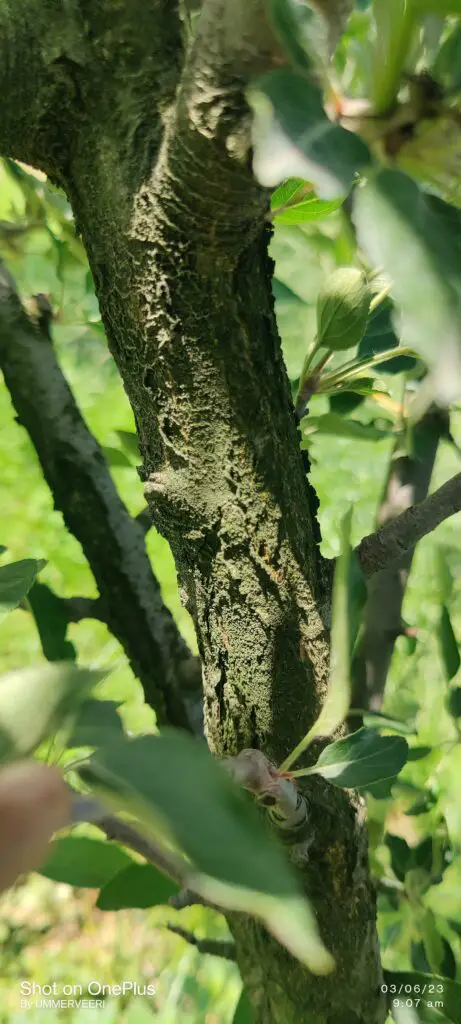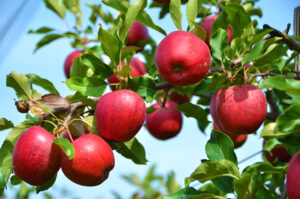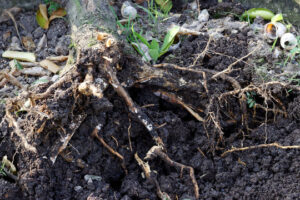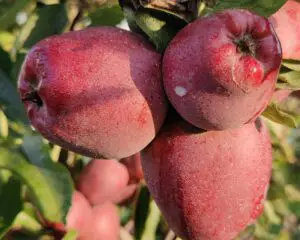Table of contents
• Introduction
• Causes
• Symptoms
• How to Identify Apple Tree Canker
• Treatment Options
• Prevention Techniques
• Conclusion
Introduction
Welcome to the world of Apple Tree Canker! It’s a bacterial infection caused by a fungus that attacks the bark of an apple tree, leaving it vulnerable to other diseases and pests. It’s a big concern for orchard owners because it can lead to significant crop loss if left untreated. As a content marketer, I’d love to tell you everything you need to know about this pesky fungus and what you can do to protect your trees. So let’s get started!

Causes
Apple Tree Canker is primarily caused by a bacterial infection. The bacteria enter the tree through wounds or damage in the bark, and once inside, they begin feeding on the tree’s tissues. This causes the death of the tree’s cells, which can lead to the formation of cankers. Environmental factors can also contribute to the development of cankers. Trees that are exposed to extreme weather conditions, such as drought or frost, are more susceptible to canker formation. In addition, trees that are planted in poor soil or are subjected to poor tree care practices are also at a higher risk. So, if you notice any wounds on your tree’s bark or extreme weather conditions, you might want to start taking action before it’s too late! *Note: Canker formation may also be due to other reasons, but bacterial infection and environmental factors are usually the primary causes.
Symptoms
Apple tree canker can produce several symptoms that could indicate an infected tree. One of these is a sunken canker on the trunk, which is a clear sign of infection. You’ll also notice bark cracking around the canker, which can indicate that the bark is dying. Dead branches are another obvious symptom of the canker. These branches can sometimes fall off the tree, which can be dangerous for anyone standing close by. In some cases, the canker may start oozing pus, which is a clear indicator of bacterial infection. This pus is a sign that the bark and underlying tissue are deteriorating rapidly. You should take immediate action if you notice any of these symptoms. It’s important to note that the canker will not always show these symptoms, making it difficult to detect sometimes. However, if you perform a thorough inspection of the tree, you’ll be able to identify any issues that could indicate infection. Additionally, regularly inspecting your tree can help you catch any problems early, giving you the best chance of saving your tree. Remember, while these symptoms can be alarming, they are not a death sentence for your tree. With proper treatment and care, you can help your apple tree recover from this disease and thrive for years to come.
How to Identify Apple Tree Canker
Identifying Apple Tree Canker is crucial to prevent it from spreading and causing extensive damage to your tree. One way to identify Canker is through proper pruning techniques. By regularly pruning your tree, you can keep it healthy and detect any potential issues early on. Look for any dead or diseased branches and remove them promptly. Visual inspection is also essential to identify Canker. Check for any sunken areas or cracks in the bark. You may also notice pus or sap oozing from the affected areas. If you notice any signs, take quick action. Remember to keep a keen eye on your tree and look for any unusual signs. Prompt action can prevent the Canker from spreading, saving you time and money in the long run.
Treatment Options
So, you’ve identified that your apple tree has a canker. Don’t start panicking just yet, there are treatment options available to help combat this pesky problem. First up, we have canker removal and sanitation. This involves pruning the infected area with sterilized pruning shears and cleaning up any debris from the base of the tree. It’s like giving your tree a good haircut and tidy-up session. If the canker has spread beyond the pruning stage, you may need to consider fungicide and antibiotic application. This involves spraying the affected areas with a fungicide and antibiotic solution. It’s like giving your tree a dose of medicine to help it get better. Unfortunately, in some cases, the infection may be too severe, and tree removal may be necessary. It’s like waving a sad goodbye to your tree, but sometimes it’s for the best. Remember, prevention is always better than a cure. To prevent canker from infecting your precious apple tree, always practice proper pruning techniques, regularly maintain your tree’s health, and ensure healthy soil practices. Don’t let canker ruin your apple-flavored dreams. Now that we’ve covered the available treatment options for canker-infected trees let’s move on to prevention techniques.
Prevention Techniques
When it comes to preventing apple tree canker, there are a few key techniques to keep in mind. First and foremost, proper pruning techniques are a must. This means cutting off infected branches and limiting pruning during periods of high risk (i.e. during rainy seasons). Regular tree maintenance is also important. This includes keeping an eye out for signs of canker, such as sunken areas on the bark, and following the proper protocol for removing infected branches. Finally, healthy soil practices are non-negotiable. Keep your soil well-drained and avoid over-fertilization, as this can weaken the tree and make it more susceptible to infection. Overall, preventative measures are crucial when it comes to managing apple tree canker. By staying vigilant and following these simple steps, you can help keep your trees healthy and free from disease.
Conclusion
It’s clear that apple tree canker can wreak havoc on your orchard if not treated and prevented in a timely manner. Ensure that you follow the outlined treatment options and prevention techniques to keep your apple trees healthy and thriving. Remember, proactive measures can save you from the headache of having to remove an entire tree. Happy and healthy apple trees equal happy apple pickers.



